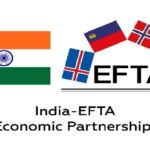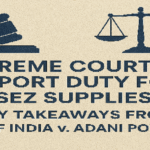1. What PN3 did and why it matters
On 17 April 2020, India introduced Press Note 3 of 2020. Any FDI by entities from countries sharing a land border with India, or where the beneficial owner of the investment is situated in or is a citizen of such a country, requires prior government approval. The intent was to prevent opportunistic acquisitions during the pandemic and beyond.
The Press Note was implemented through amendments to the Foreign Exchange Management (Non-Debt Instruments) Rules, 2019. Rule 6 now carries the government-approval requirement for these cases. DPIIT’s interpretation has been applied broadly. It catches direct investments, secondary transfers, increases in shareholding, and transactions where “beneficial ownership” is traceable to a land-bordering country even through intermediate jurisdictions.

2. Who is covered
The regime applies to investors linked to China, Pakistan, Bangladesh, Nepal, Myanmar, Bhutan and Afghanistan, and to any investment where the beneficial owner sits in or is a citizen of these jurisdictions. The PN3 test is now a standard gating item in India deals
3. Beneficial ownership: the unresolved threshold
PN3 and the NDI Rules do not define “beneficial owner.” In practice, authorities may look to the Companies (Significant Beneficial Owners) Rules or the PML Rules, which use different thresholds. This lack of a single codified threshold has created diligence and structuring uncertainty for funds and corporates.
Under the Companies (Significant Beneficial Owners) Rules, a person is a significant beneficial owner if they hold at least 10 percent of shares or voting rights, or exercise control or significant influence. By contrast, under the PMLA Rules, a beneficial owner of a company is one with 25 percent or more controlling ownership or entitlement to profits, or the individual serving as the senior managing official.
4. What transactions are covered
PN3 approval is needed whenever an Indian company is involved and a person linked to a land border country will get a stake or control. This includes:-
- New share issues
- Sale of existing shares
- Transfers between two non-residents if the buyer is PN3-linked
- Group reorganisations that move an Indian asset to a PN3-linked entity
- Overseas acquisitions that give a PN3-linked buyer indirect control of an Indian subsidiary
- Later steps such as conversions or transfers that raise PN3-linked beneficial ownership
5. The approval process: how to file and what to expect
Portal and format. Applications are filed online on the National Single Window System with processing on the Foreign Investment Facilitation Portal.
Security vetting. PN3 cases are mandatorily referred to the Ministry of Home Affairs for security clearance. MEA is informed and RBI reviews from a FEMA perspective.
Timelines. The 17 August 2023 SOP prescribes an overall target of 12 weeks from circulation to decision, excluding time taken by applicants to cure deficiencies. The time chart allocates windows for initial scrutiny, policy clarifications, inter-ministerial comments, and final decision by the competent authority.
Key documents. The SOP annexures list standard items: corporate charter documents, board resolutions of investor and investee, last audited financials of the investor, valuation certificate where applicable, transaction documents, security clearance form, and apostilled or notarised copies per the Foreign Exchange (Authentication of Documents) Rules, 2000 where relevant. Post-approval. Typical conditions include compliance with sectoral caps and pricing guidelines, reporting on FIRMS (FC-GPR or FC-TRS), and ongoing adherence to the FDI Policy and NDI Rules. Non-compliance is compoundable under FEMA, but may attract enforcement.
6. Approvals and outcomes to date
Public reporting indicates a material, though selective, flow of PN3 decisions:
- From 2020 through April 2024, out of 526 FDI proposals routed through the PN3 filter, 124 were approved and 201 were rejected, with the balance under review.
- The government has cleared several proposals involving Chinese-linked electronics supply-chain players where Indian control is retained or sensitivities are mitigated, such as approvals reported for Luxshare and a Micromax-Huaqin joint venture.
- In mid-2025, the government approved Dixon Technologies’ smartphone JV with Longcheer at 74 percent Indian and 26 percent foreign ownership, with explicit PN3 clearance referenced in market commentary. This has been cited as a marker of a calibrated, case-by-case opening in manufacturing.
These data points align with broader commentary that approvals are possible when structuring, ownership and governance address security and supply-chain concerns
7. Will PN3 be liberalised
There are signs of calibrated moderation rather than a wholesale rollback.
- India’s 2023-24 Economic Survey and several policy commentators have argued that judicious easing can help embed India in global supply chains. Media and policy analysis continued the debate into 2025.
- Reportage through 2024 and 2025 shows mixed outcomes. Big-ticket auto EV investments with direct Chinese control faced headwinds, while Indian-controlled JVs and component-supply partnerships saw movement. This supports the view that approvals will continue where control and security risks are credibly addressed.
- Some proposals and think-tank suggestions have floated higher automatic thresholds for minority stakes, though no formal change has been notified as of now. Treat this as directional, not settled policy.
Our expectation: India will keep the approval gate but use it with more nuance in non-sensitive manufacturing and export-linked supply chains, particularly when Indian ownership and governance remain decisive. The Dixon-Longcheer approval and reported clearances for select Apple-ecosystem suppliers are consistent with that path.
Bottom line
PN3 is now embedded in India’s investment control architecture. It adds a front-end approval gate for land-border jurisdictions and for beneficial ownership tied to them. The gate is not closed. Where structures preserve Indian control, address security concerns, and advance domestic manufacturing, approvals are attainable. Process discipline matters. So does early ownership mapping and conservative deal timetables.





